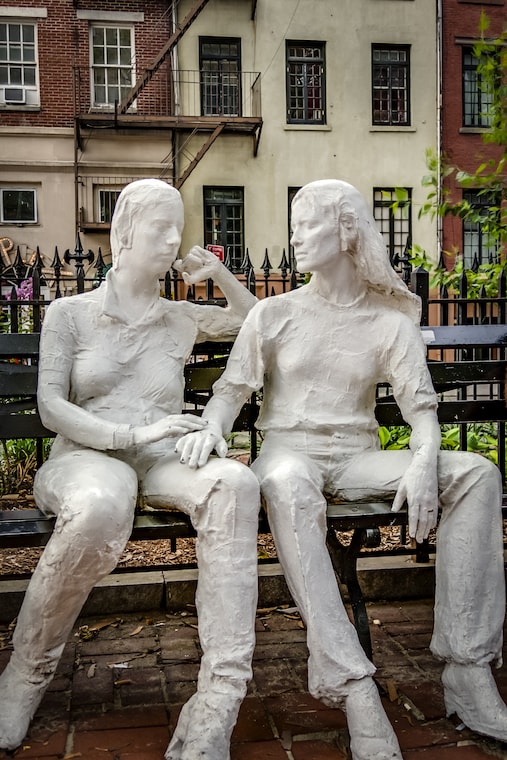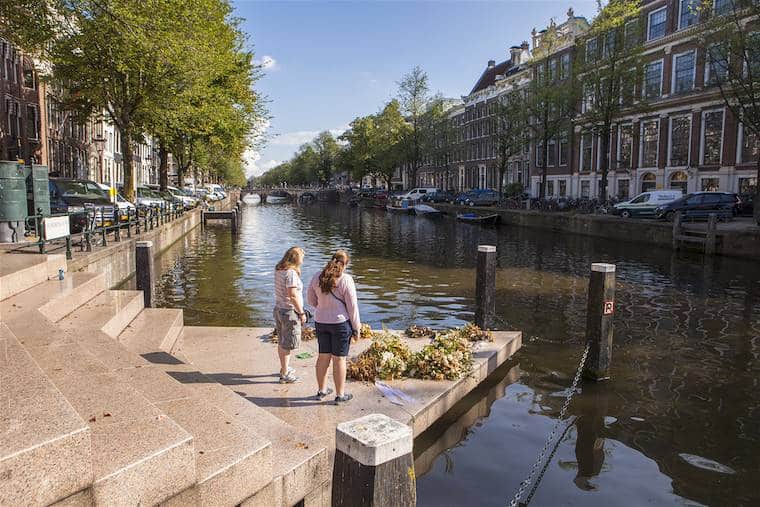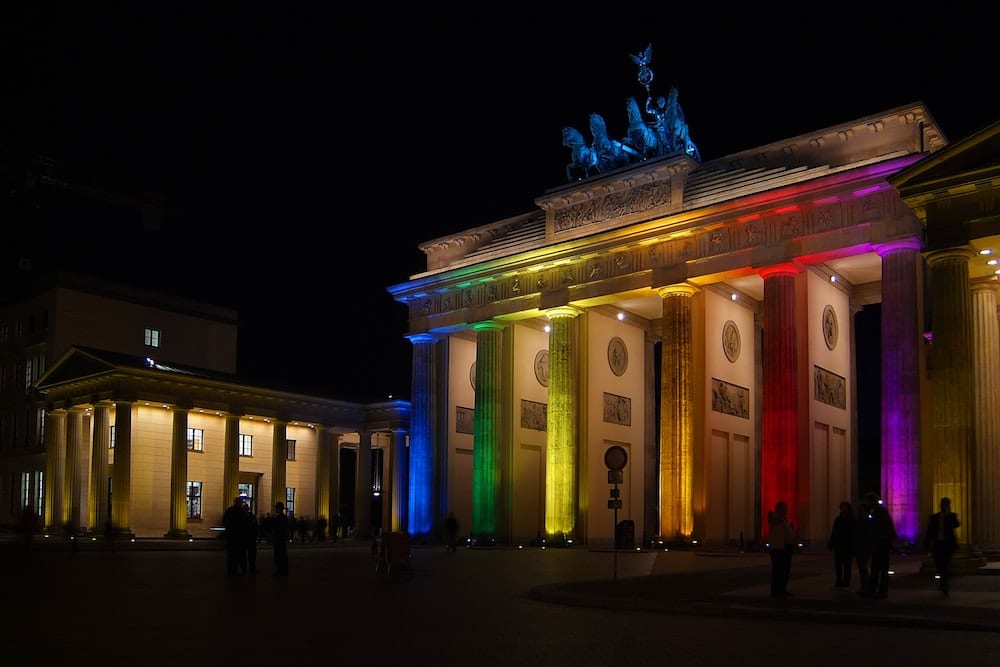I had a stuttering boy. He was the first stuttering person I met in my life. And the coolest thing is that he handles it really well, he doesn’t care. Talking about the subject, he told me that he also hadn’t met anyone like him until this year, and it was incredible when he recognized himself in that person. That they understood what the other was going through when they got stuck when it came to speaking, and they were very happy with this unity created by facing similar issues in life.
We really are social animals and need representation to make life a little easier, as I said in the last column. This sense of community saves lives. That’s why I selected some tourist spots for LGBTQI+ people to visit around the world, celebrate our history and feel part of something bigger, that protects us, encourages us, supports us.
Berlin, Monument to homosexuals persecuted by Nazism
(Monument to the homosexuals persecuted during the Nazi era)
Films, series and documentaries were made about the Jewish genocide during German Nazism, but little attention is paid to the persecution of homosexuals. It is estimated that after the 1935 law that made homosexuality a crime, more than 50 thousand individuals were convicted for this reason – sometimes for a simple kiss. They were arrested, castrated, sent to concentration camps, abused, and the most impressive thing is that the law was in force in Germany until 1969, 24 years after the end of the Second World War.
Upset by this silence, groups of activists demanded the government, and in 2003 Parliament decided that a monument would be built to honor and keep alive the memory of these victims of the Holocaust. A 3.6 meter high concrete block was opened in 2008 in Tiergarten Park, in front of the Memorial to the Jews. The project by the Scandinavian duo Ingar Dragset and Michael Elmgreen features a small glass window, through which you can see scenes of homosexuality in a one and a half minute video, replaced every two years. It conveys the sensation of the clandestinity in which they were forced to live, and dialogues with the striking aesthetics of the memorial across the street.
Read more texts about LGBTQI+ Travel
Montevidéu, Sexual Diversity Square
One of the first countries in the world to legalize equal marriage in 2013, Uruguay was even more pioneering by creating this space to celebrate diversity eight years before the law was approved. Anyone who passes through the Peatonal Sarandí street, one of the most important historical streets in Montevideo, is called by the colors of the graffiti and paintings to visit the alley. A sign with the pink triangle, used by the Nazis to identify homosexuals by their uniform in concentration camps, marks the entrance to the place. “The right of every human being to be respected in their diversity constitutes a wealth for the city”, stated the city’s mayor at the time of the inauguration. Today it has established itself as a space for meetings, discussions, artistic presentations and, of course, representation.
Paris, Oscar Wilde’s tomb in the Père-Lachaise cemetery
“In this world, there are only two tragedies: one is that we do not satisfy our desires, and the other that we satisfy them,” said writer Oscar Wilde. After being married, with two daughters and already recognized for the quality of his literature, he became involved with Lord Alfred Douglas. Living this desire was his tragedy. It cost him two years in prison, from 1895 to 1897, from which he would emerge weak, malnourished and dejected, and would die 13 years later, at 46. As The Guardian tells it, during this period the Irishman was confined in total isolation, and could not even write novels . But as the right to produce letters was guaranteed, Wilde did so: From the depths it is his bitter letter to his lover that led him to the great tragedy of his life. Since the end of the 1990s, his tomb in Paris’ most famous cemetery has become a place of gay pilgrimage, where people used to leave a kiss with lipstick to honor him. Now that comes with a fine of 9,000 euros for property damage, so it’s best to leave flowers and thank those who came before for their fight.
Read too: Visit to Père-Lachaise, the most famous cemetery in Paris
Nova York, Gay Liberation Monument

Everything seemed relatively fine in Greenwich Village, New York. The Stonewall Inn restaurant and bar functioned as a kind of stronghold of freedom for the homosexual community in the 1960s. Until in June 1969, the police invaded the place, attacked its patrons and took 13 people to jail just for being homosexual or bisexual. The episode would lead to the first rights march in the city and would become the ignition for the fight for rights in the United States. To mark the relevance of the event, in 1992, a work by the artist George Segal was inaugurated in Christopher Park, almost in front of the Stonewall Inn, as simple as it was symbolic. Two men standing and two women sitting talk quietly. Without fear, in the most natural way possible, as the artist understood homosexuality should be seen.
Amsterdam, Gay Monument

The first monument in the world to honor homosexual victims of persecution and violence was inaugurated in 1987, and it could only be in Amsterdam. Also referencing the pink triangle used by the Nazis, the three pink granite points on the edge of the Keizersgracht canal represent the past, present and future of the fight for rights. Not by chance, they also point to the National War Museum, Anne Frank’s house, and COC Amsterdam, a non-profit institution that organizes events and cares for LGBTQI+ people with lawyers, psychologists and other volunteer professionals. Right next to the monument is Pink Point, a tourist information center aimed exclusively at the public.
Sign up for our newsletter

Sign up for our newsletter and stay up to date with exclusive news
that can transform your routine!
Warning: Undefined array key "title" in /home/storelat/public_html/wp-content/plugins/link-whisper-premium/templates/frontend/related-posts.php on line 12
Warning: Undefined array key "title_tag" in /home/storelat/public_html/wp-content/plugins/link-whisper-premium/templates/frontend/related-posts.php on line 13




